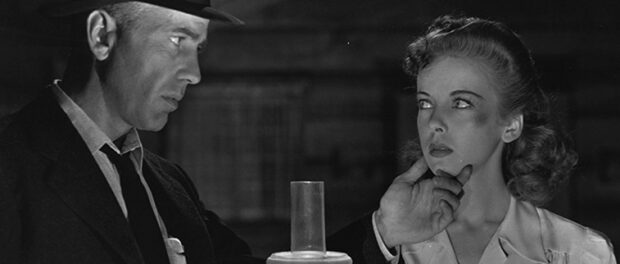High Sierra (1941)
[7]
Humphrey Bogart plays a notorious robber recently released from prison who gets hired by his old boss for one more robbery at a California resort. While gearing up for the heist, he handles two less-capable robbers, two love interests, and an ownerless dog that brings bad luck to everyone. High Sierra paints Bogey’s character as a somewhat sympathetic one who might regret his past and might retire after this last gig. But by the end, the film makes clear old Bogey’s got it coming in a climactic police hunt in the high Sierra Nevadas.
Bogart’s measured performance is why High Sierra works — we want to see his character make good and redeem himself. But the film goes unnecessarily out of its way to make sure we stop sympathizing with him in the third act — as though we can’t possibly deal with the impending death of a sympathetic character. I don’t need to see Bogey become devastated when a 20-year old (Joan Leslie) rejects his hand in marriage. First of all, he barely knows the girl, and second of all, there’s another lady (top-billed Ida Lupino) who’s much more suited for him — and interesting for us. What’s more unfortunate is that the marriage rejection makes Lupino a clearly marked second choice romance. That she’s okay with that designation compromises our emotional investment in the final act.
But, hey — perfection is the enemy of good. High Sierra delivers a star turn from Humphrey Bogart in a well-constructed crime story with a scenic finale. Lupino is up to the task, especially as she unravels in the final scenes. And that unlucky dog? Of course, he’s a scene stealer. But perhaps the best thing about High Sierra is that it ended up being the final stepping stone on Bogart’s ascension to stardom. Just a year later, he’d be cast in Casablanca.
With Arthur Kennedy, Henry Hull, Henry Travers, and directed by Raoul Walsh.


